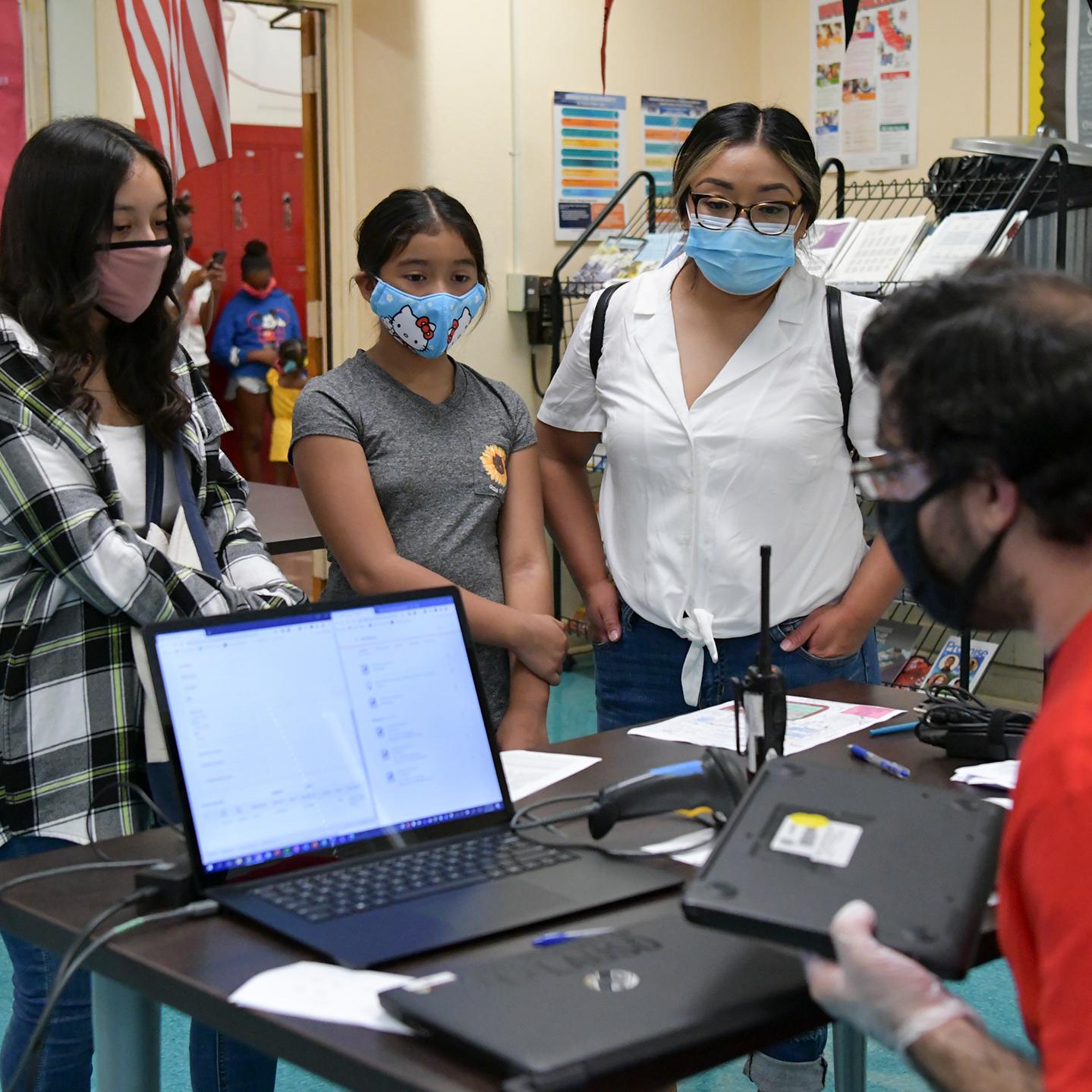
News
Averting a "Lost Generation" of Students
A year into the covid-19 pandemic, a forum hosted by The Atlantic confronts the toll on America's schools—and where education goes from here
Students are finally returning to classrooms, and as they do, teachers and policymakers are weighing the pandemic's long-range impact on education. “This has been a difficult year for administrators and students alike,” said Adam Harris, an Atlantic staff writer who moderated the forum “The State of Education: Rebuilding a More Equitable System” earlier this month. “What needs to fundamentally change as school districts across the country reopen?”
The event, hosted by The Atlantic, brought together leaders from across the education community to discuss the events of the last 12 months and grapple with what worked, what didn't, and how to help students make up for lost time.
Dr. John B. King, Jr., who served as Secretary of Education under President Barack Obama and now leads The Education Trust, focused his remarks on education reform—specifically access to advanced classes. He returned to a criticism he has levelled in the past—that the lack of college-level courses in rural, minority, and low-income high schools is a major barrier for students. “As a country, we were giving the least to the students who need the most,” King said. “Less access to strong teachers, less access to counselors, less access to advanced coursework like AP classes or algebra in the eighth grade.”

The Atlantic/YouTube
"Atlantic" staff writer listens to Dr. John B. King, Jr. during the State of Education forum.
Thanks to the pandemic, though, King said this major equity problem now has an easier solution. The last year gave both teachers and students an intense immersion in online learning. That should make it possible to offer more advanced classes remotely—and allow students to not be limited by what’s available in their own school. “We can never again say to students, ‘You can’t take that class because it’s not offered in this building,’” King said. “Just because AP Spanish isn’t offered in your building doesn’t mean you can’t take it, because you can take it through an online, blended-learning opportunity.”
One district that used remote learning to experiment with how it delivered its classes was Baltimore City Public Schools. Over the last year, Baltimore schools tested different ways of deploying teachers, using an experienced instructor to deliver online lessons to a large number of students while other teachers spent their time on mentoring and one-on-one outreach. Dr. Sonja Santelises, CEO of Baltimore City Public Schools, said that schools may want to keep parts of that model even after students are back in the classroom, allowing teachers to specialize more in certain aspects of education.
“The young people most in need of the most skilled teachers often are not the ones who get to receive that teaching,” Santelises said. “We can use technology to bridge that gap and create better access.”
Baltimore public schools also found new ways to engage with parents, thanks to the reliance on online instruction.
Santelises said remote classrooms gave teachers and families a window into each other's worlds that would have been almost impossible otherwise. Parents could see, up close, what their kids are doing in class; educators, meanwhile, had "a lens into families that they previously did not have," Santelises said. “We found far more effective ways to engage families when we had to rely on technology." Moving forward, she added, "How do we leverage that family voice that we were able to tap into during this time and really carry that over?”

The Atlantic/YouTube
Atlanticlive contributor Susan Saulny, left, and Dr. Mildred García, top right, listen as Dr. Sonja Santelises, bottom right, speaks during the State of Education forum.
That focus on students’ home lives has also changed how higher education leaders think about their programs.
Dr. Mildred García, president of the American Association of State Colleges and Universities (AASCU), said that public universities part of AASCU serve large numbers of first-generation students who are balancing jobs and family obligations as they pursue a degree. The pandemic brought greater understanding about the need for flexibility in class times, deadlines, and other basics of the experience for nontraditional students.
“We’re trying to set the standards high, but help students reach those standards,” Garcia said. “We give them the tools by having the support services, by understanding their needs and where they need to go with their education, by making sure we are dealing with what they’re dealing with.”
One of the undeniable costs of the pandemic is that, for some students, the pressures of balancing home, work, and school responsibilities proved to be too much. King noted that one of the most urgent challenges over the next several months will be reconnecting with students who have either dropped out or decided not to pursue higher education. Convincing those students to complete their education now is crucial for the country to keep making progress on college attainment.
“That may mean needing to change how school is designed for some kids,” King said, citing flexible scheduling for students who are also working. “Can we think about career and technical education programs that might help students see the immediate connection between what they’re doing in high school and what they want to do professionally?”
The bottom line, King added, is that “we’re going to have to work very hard. We cannot afford to have a lost generation of students.”


